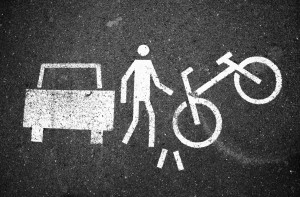« Putting data analysis into the hands of the business user | Avoid the Spaghetti »
Set up a test then check the data then decide
 How often do you argue to someone making a gut call the importance of being “Data driven”? In the business intelligence business, we’ve been talking about this for more than 20 years.
How often do you argue to someone making a gut call the importance of being “Data driven”? In the business intelligence business, we’ve been talking about this for more than 20 years.
I was very pleased to see that the City of Toronto, Canada (our home town) is doing some driving with data, and it is a great example of how real data makes real decisions better.
One of the biggest challenges all cities face is congestion and traffic- and various solutions are (sometimes it seems endlessly) debated in council and at the kitchen table. In the city core the classic balance is between cars and pedestrians.
Toronto has been experimenting with all way pedestrian crossings for a number of years– three intersections in the core of the city were converted, and data has been collecting. Sometimes called “scramble” crossings, these intersections periodically give a red light in both directions to cars, and pedestrians can cross all ways, including diagonally. Letting large crowds move quickly. Supporters argue pedestrians are greatly helped with limited impact on cars, car supporters argue that the intersections generate gridlock and are dangerous.
In Toronto, with three different intersections and lots of data, rather than a simplistic “all way crossings are bad for cars” or “eliminating all way crossing are bad for pedestrians”, the city could actually look at the data. And found that it wasn’t a yes-no question.
For two of the intersections, the benefit to reducing wait time for pedestrians and the impact on car traffic was a net win.
For the third, wait times for cars increased more (more idling, more pollution), accidents increased (side swipe collisions doubled, rear end collisions up by half), without significant improvement in corner crowding and pedestrian wait time. As a result, the authors of the study recommend keeping the intersections that work, and reverting the third back to a normal setting.
In other words- there is no simple black and white answer for these types of crossings. Everything is a balance. But there is an algorithm that can work.
Study the existing data, make decisions on where to test next, set up a good test, collect data, and then using defined criteria and metrics that evolve as we learn more, determine which intersections are best suited, and which should be returned to a normal configuration. Then do it all again, constantly optimizing.
It works for business data, it works for cities. Test, collect, analyze, act and start testing again armed with your new knowledge.
Arguing about something then making a huge all or nothing decision is often the wrong choice- set up a test, try it, collect data, and use that to drive your decision. Do it as quickly as you can and you will manage risk, and- providing you listen to what the data says- make better decisions.
« Putting data analysis into the hands of the business user | Avoid the Spaghetti »



